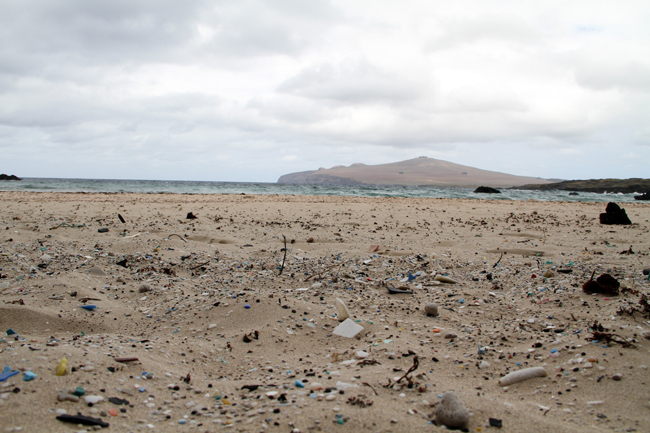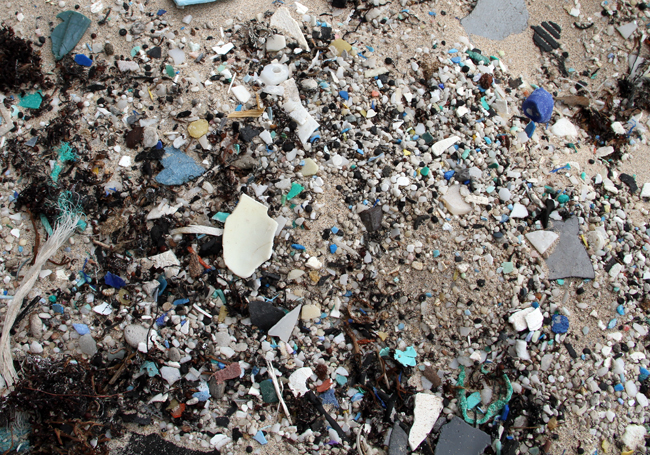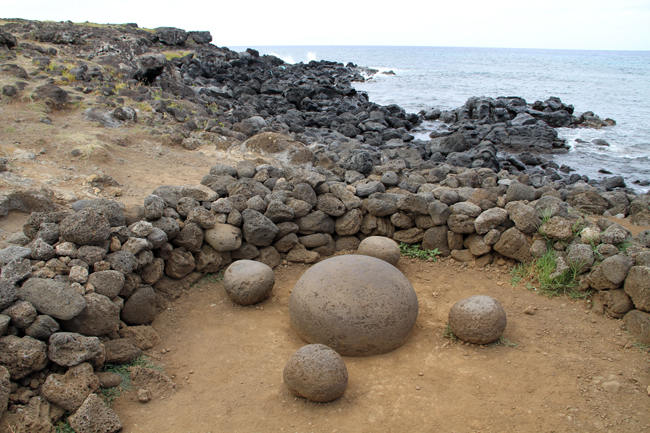Nothing could have prepared me for the hard contrast between the utter beauty of the natural treasures topped with ancient cultural remains and the presence of large scale pollution, both on land and in the water, as I was about to witness on Easter Island (Rapa Nui). We circle around for a while before we land because the (only!) landing strip has to be completely cleared otherwise it is not long enough to come to a full stop. Maybe it is my imagination but it feels like the plane is using its brakes much harder and with more force than I know from other landings. There is no tunnel to walk though, no bus and not even a designated walking path towards the small wooden building which is the entire Mataveri airport. We just walk out of the plane and are free. Not even a passport control, since it is a domestic flight from Santiago and Easter Island is part of Chile since 1888. This feeling of freedom and ease is definitively present during my entire stay on the island and is only clouded by the feeling that there is no way off the island in case something goes really wrong. Easter Island is claimed to be the most remote inhabited island in the world. It takes at least 5 hours to reach the mainland. And then there is the understandable emotional reaction by about half of the entire population which is a mixture of distrust and anger for coming to disturb their peace. The income generated by tourism is vital for the islanders and most of them try to make a living out of the constant flow of new visitors, but it comes at a high price. They are never ever left alone and especially the indigenous population, the last remaining Rapa Nui, must feel like monkeys in a cage. They call the island themselves the biggest open air museum of the world. You can join guided bus tours or do it on horseback, you can rent bicycles, scooters, motors, and jeeps to visit the different locations which are worthwhile visiting. I go for the 4×4 jeep since I will be visiting the areas where tourists usually don’t come. To see the contrast I first drive to the well known Anakena beach, the bounty commercial again, and after that to a small less accessible beach just east from it. I almost fill up a first bag, but what surprises me more is the amount of micro plastic on the beach. The last flood line is so packed with confetti size plastic particles in all colours and shapes, including a lot of virgin plastic pellets, that when I pick up a hand full, only half of it is organic material like shells, stones, wood and seaweed, the other half is plastic.
I visit maybe the most holy place on the island: Te Pito O Te Henua (the navel or belly-button of the world). A round boulder which has magical powers, is surrounded by four smaller boulders on which you can sit while touching and stroking the big one. When I arrive a woman is hugging and caressing the stone like there is no tomorrow while her friend or husband takes pictures of her for good memories. I feel sick already. What almost no one does is visit the rocky beach area just behind the holy boulders. It is a chaotic collection of sharp and similar lumbs of lava that are guttered by huge waves around the clock. In between the sharp dark brown and black rocks I find more plastic trash than I can carry. I decide to clean the area around the magic stone as much as possible and by the time I’m done there is no tourist around the monument anymore. I touch the stone a few times (just in case), before filling up the car and decide to go back to the hotel.


